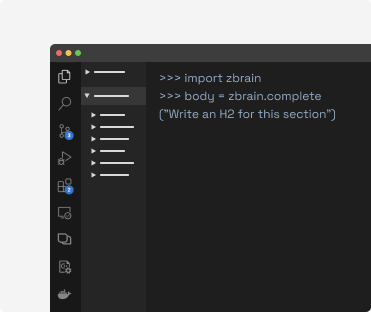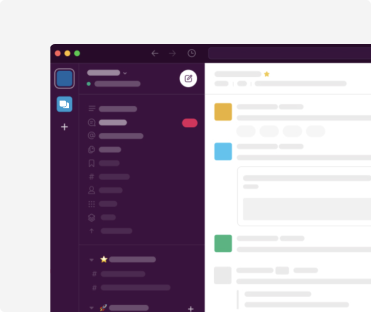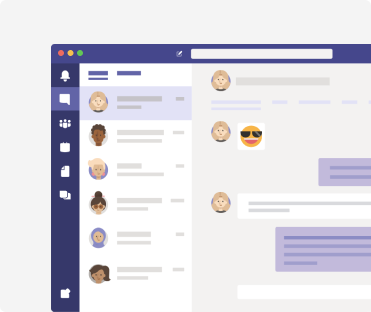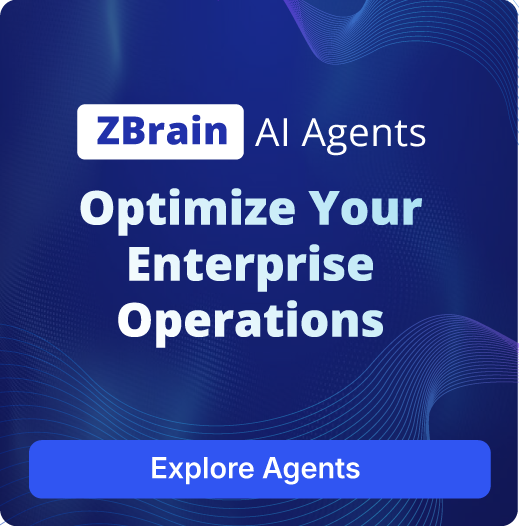How ZBrain Improves Your Healthcare Operations

Efficient Claims Processing

Compliance and Reporting

Automation of Administrative Tasks

Personalized Patient Interactions
Optimize Workflows With ZBrain in Healthcare Business
| Departments / Types of Queries | Generate | Research | Repurpose | Analyze | Transform |
|---|---|---|---|---|---|
 Administrative Administrative |
Create automated responses for common administrative inquiries. | Investigate efficient scheduling practices for patient appointments. | Adapt administrative data for streamlined processes. | Examine resource allocation for administrative tasks. | Develop strategic plans for optimizing resource allocation based on administrative task analysis. |
| Generate automated responses for common billing inquiries. | Research billing best practices and compliance. | Adjust billing data for efficient revenue cycle management. | Inspect billing trends and reimbursement rates. | Formulate plans for improving financial performance from billing trends and reimbursement data. | |
| Develop financial reports for healthcare budget analysis and forecasting. | Explore financial strategies to optimize resource allocation. | Modify financial data for strategic financial decision-making. | Analyze revenue trends and cost-saving opportunities. | Translate financial data into actionable insights for strategic decision-making and enhanced fiscal health. | |
| Produce summaries of legal compliance for healthcare regulations. | Review regulatory requirements for healthcare reporting. | Repurpose legal compliance data for employee training. | Examine legal proceedings related to healthcare compliance. | Convert legal compliance and proceedings insights into actionable risk mitigation strategies. | |
| Create automated responses for common patient inquiries. | Investigate patient care protocols and best practices. | Adapt patient data for personalized care plans. | Examine patient outcomes and satisfaction. | Based on outcomes and satisfaction analysis, formulate personalized care plans and strategies for enhanced patient experiences. | |
| Generate cybersecurity measures for patient data protection. | Research cybersecurity best practices for healthcare. | Repurpose security protocols for internal documentation. | Probe data encryption protocols for healthcare transactions. | Translate cybersecurity measures and data encryption protocols into actionable security protocols. |
LLMs That ZBrain Supports
GPT-5
Llama 3
GPT NeoX
PaLM-2

Vicuna

FLAN
Gemini-2.0
All Hugging face models
Mistral
AZURE GPT-4
BERT
Stable LM
ZBrain AI Agents for Healthcare
Leverage ZBrain AI agents to transform patient care, streamline clinical processes, and drive data-driven decisions for better outcomes in the healthcare sector.

HIPAA Compliance Check Agent
Ensures HIPAA compliance by monitoring records and communications, flagging potential violations for timely review.

Patient Appointment Scheduling Agent
Automates patient appointment booking by analyzing availability, preferences, and urgency, sending confirmations seamlessly.

Post-Care Instruction Agent
Automates the creation and delivery of personalized post-care instructions for patients, reducing readmissions.

Insurance Claims Validation Agent
Automatically validates healthcare insurance claims, checking for missing information, coding errors, or discrepancies before submission.

Post-Service Survey Agent
Automatically sends customized post-service surveys based on the specific service received.

Invoice Generation Agent
Generates invoices based on specific billing parameters and adjustments, with access to customer billing details for accuracy and customization.
Integrate ZBrain Into Your Workflows

API

Slack


